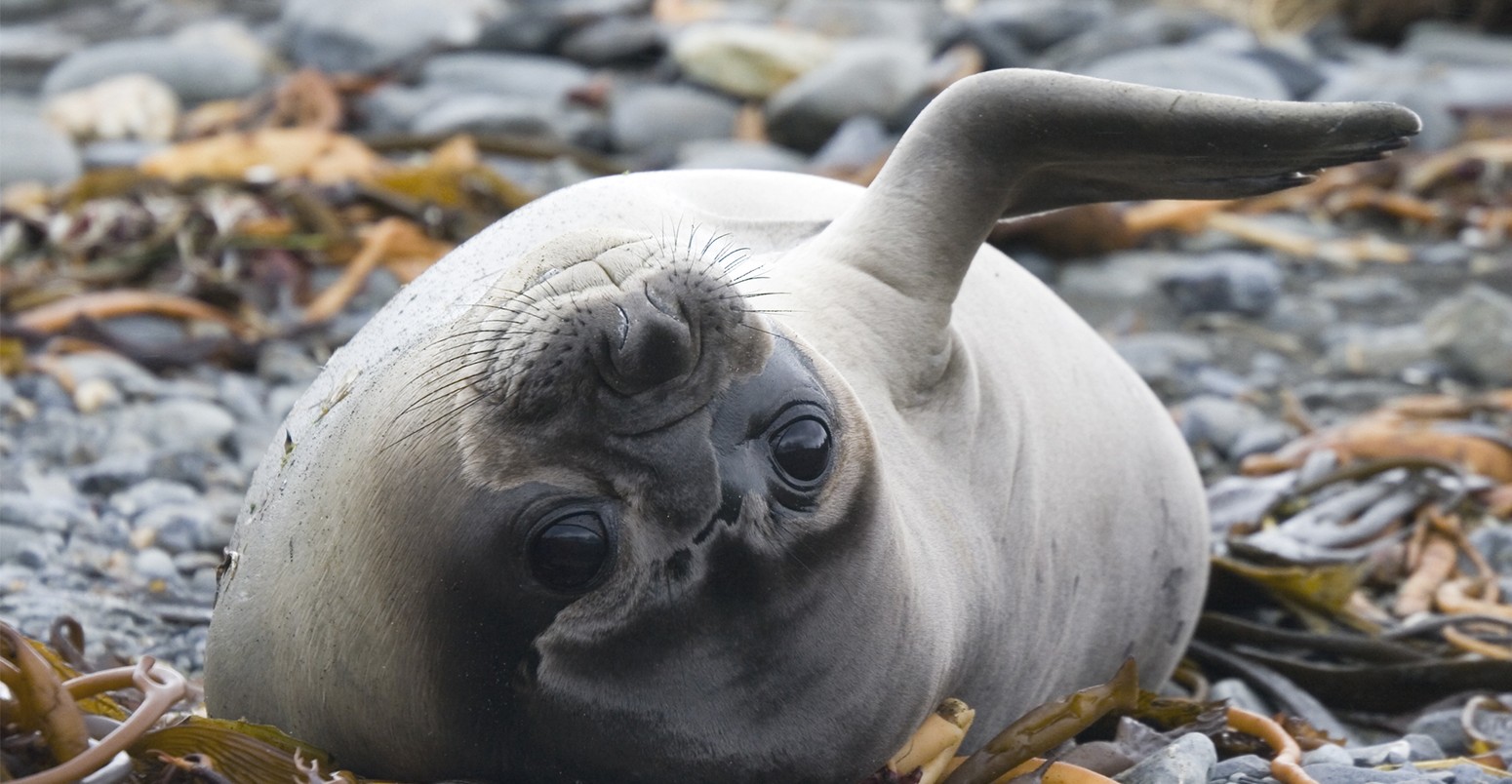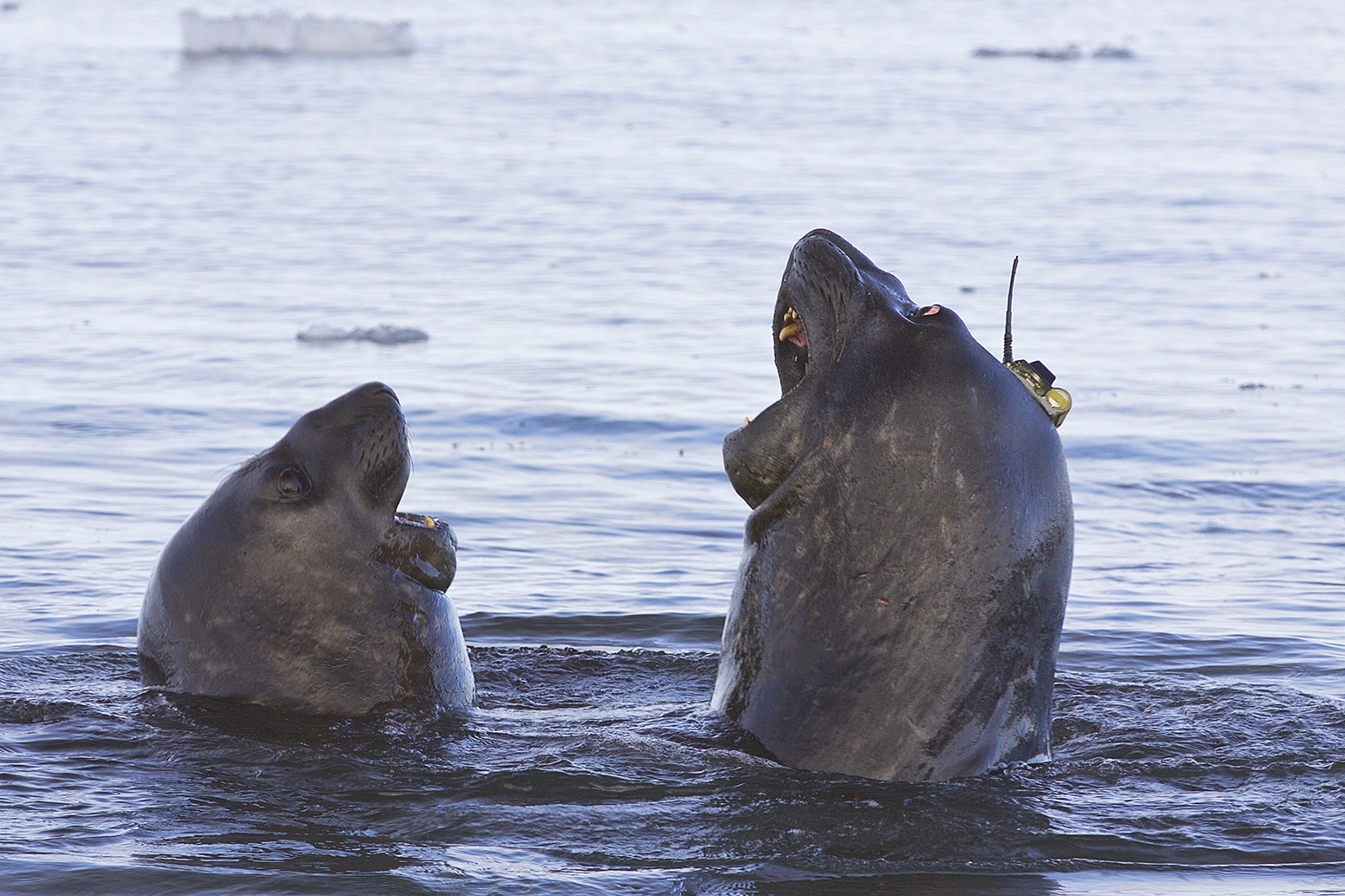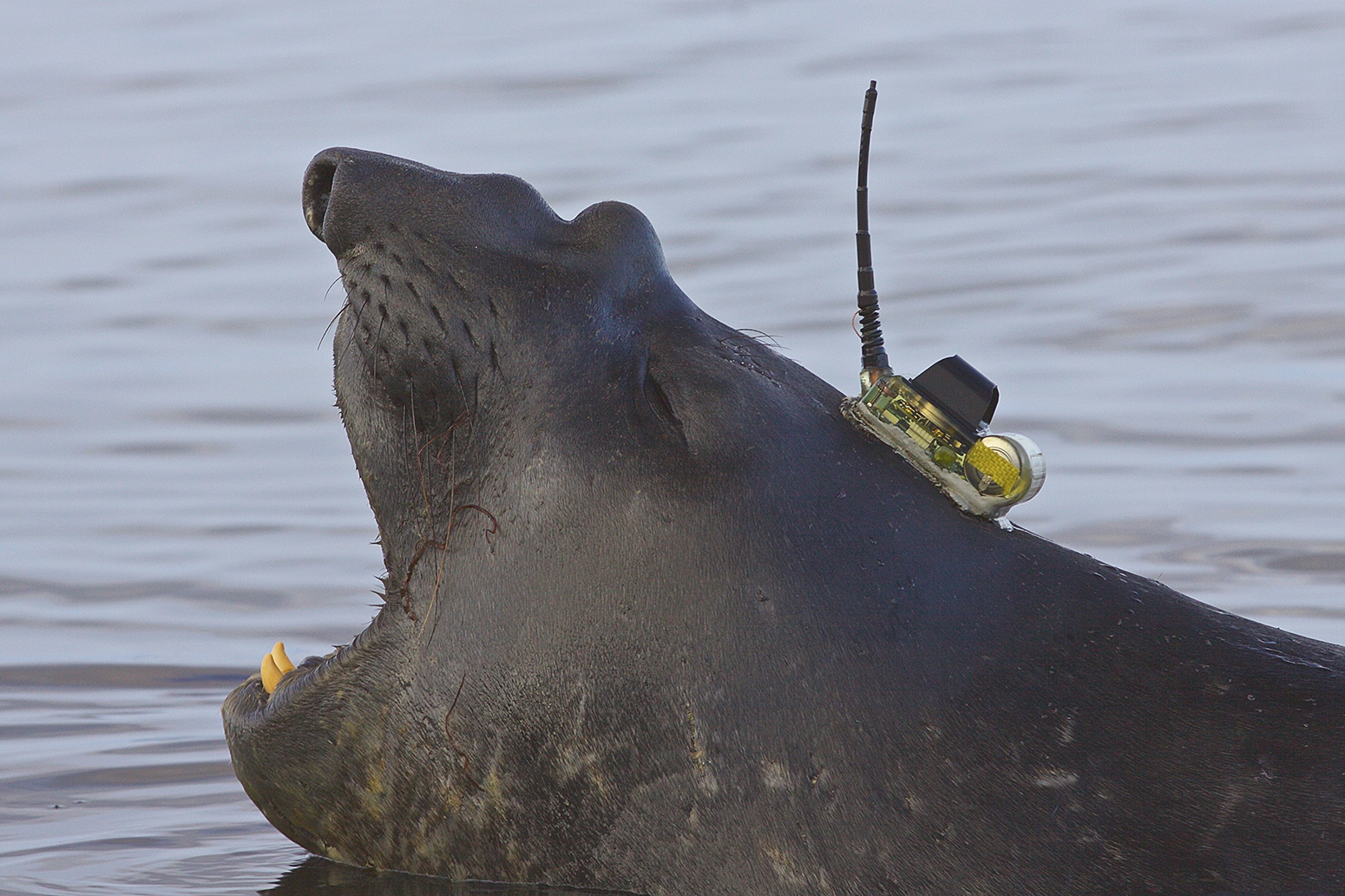
Seals help scientists get to the bottom of Antarctic changes
Robert McSweeney
08.23.16Robert McSweeney
23.08.2016 | 4:13pmElephant seals in the Southern Ocean are helping scientists discover how melting Antarctic ice is affecting the oceans.
Using one of the more ingenious methods of data collection, the researchers mount tiny instruments onto the back of seals. As the seals swim and dive, they collect information about the temperature and saltiness of the seawater, reaching areas not easily accessible to scientists.
The seal data shows that the flow of water from melting Antarctic ice shelves is making the surface water around East Antarctica less salty, the new study says.
This is slowing the formation of “bottom water” – very cold, salty water that sinks all the way to the seabed – potentially affecting the conveyor system that carries heat around the world’s oceans.
With ice shelves melting as global temperatures rise, this could see this bottom water formation slow down even more in future, the researchers say.
Ice factories
Bottom water typically forms near the Earth’s poles, where water gets cold and dense enough to sink to the depths of the ocean. In the southern hemisphere, researchers have identified four areas where Antarctic Bottom Water (AABW) forms.
One of these areas is Cape Darnley in East Antarctica. The study, published in Nature Communications, focuses on an area just upstream of Cape Darnley called Prydz Bay.

Southern male elephant seals carrying state-of-the-art miniaturised satellite linked conductivity-temperature-depth sensors in Prydz Bay Antarctica. The seals and the data they are collecting provide invaluable oceanic profiles and observations that are changing how we study the Southern Ocean. Credit: Clive R. McMahon.
You can see the region in the map below. The area closest to the Antarctic coast is taken up by the Amery ice shelf, a 60,000 square kilometre floating tongue made up of glacier ice flowing off the land and onto the sea. Beyond the ice shelf is the ocean and sea ice of Prydz Bay and Cape Darnley.
The inset map in the figure shows where readings were taken using the seals’ instruments – shown as red, purple and green points. The seals collected measurements of pressure (depth), temperature and salinity. Continuous diving by the seals allows the scientists to build up a profile of how the temperature and saltiness of the water varies with depth.

Map of Prydz Bay and surroundings. White areas are the East Antarctic ice sheet, blue areas are ice shelves, and other shading indicates depth of water. Productive polynyas are indicated by dark green outlines. Inset map shows data collection points by elephant seals, from fieldwork in 2011 (red), 2012 (purple) and green (2013). Source: Williams et al. (2016).
Critical to the formation of bottom water are polynyas – patches of open water within the sea ice. When winter winds blow sea ice away from the Antarctic coast, polynyas open up in the ice. The cold temperatures and icy wind cause the water to freeze, creating more sea ice, which the wind again blows away, and so on.
This ongoing cycle makes polynyas into very effective ice factories. The most productive polynyas in the region are outlined in dark green in the map above. Cape Darnley is the second most prolific producer of sea ice in Antarctica.
When the ice forms, it leaves behind the salt in the seawater. This makes the surface water more dense than the sea beneath it, so the water sinks. Eventually, this dense water gets mixed up with warmer and saltier water, forming AABW and filling the bottom of the ocean.
Part of the motivation of the study was to pin down the contribution that water from Prydz Bay makes to bottom water formation in Cape Darnley. However, the researchers also discovered that melting ice shelves are potentially derailing this whole process.
‘Already compromised’
With the help of the elephant seals, the researchers found that melting of the Amery and West ice shelves is releasing freshwater into Prydz Bay.
Freshwater is more buoyant than seawater, which means it reduces the overall density of the water in the polynyas, so less water sinks to become AABW.
Continued melting of ice shelves is a threat to long-term formation of AABW, the paper says:
This is problematic because AABW is an important player in the Earth’s climate, says co-author, Dr Laura Herraiz-Borreguero, a research fellow at the National Oceanography Centre at the University of Southampton.
The formation of AABW initiates the deep-ocean currents that drive the global conveyer system. If the AABW process is suppressed, this could lead to a slowdown of the ocean conveyor, she says:
Instrumental seals
Antarctica and its surrounding waters aren’t the easiest places to collect measurements – particularly during winter. When scientists can’t reach an area by ship, they have to look for alternatives. For example, other studies have used robotic underwater gliders to take measurements in the water beneath ice shelves.
In this instance, the researchers enlisted the help of elephant seals who spend much of their feeding time swimming in Antarctic waters – covering a lot of the areas that the researchers wanted to investigate.

Southern male elephant seal carrying a state-of-the-art miniaturised satellite linked conductivity-temperature-depth sensors in Prydz Bay Antarctica. Credit: Clive R. McMahon
The seals aren’t harmed during this process, says Herraiz-Borreguero:
Despite the advantages, there are some drawbacks to using seals to collect data too, says Herraiz-Borreguero:
Nonetheless, the data they have collected provides an insight into Antarctic waters that scientists would have struggled to get without the seals’ help.
Williams, G. D. et al. (2016) The suppression of Antarctic bottom water formation by melting ice shelves in Prydz Bay, Nature Communications, doi:10.1038/ncomms12577
-
Seals help scientists get to the bottom of Antarctic changes
-
"User generated date" taken to new depths by seals in the Antarctic

